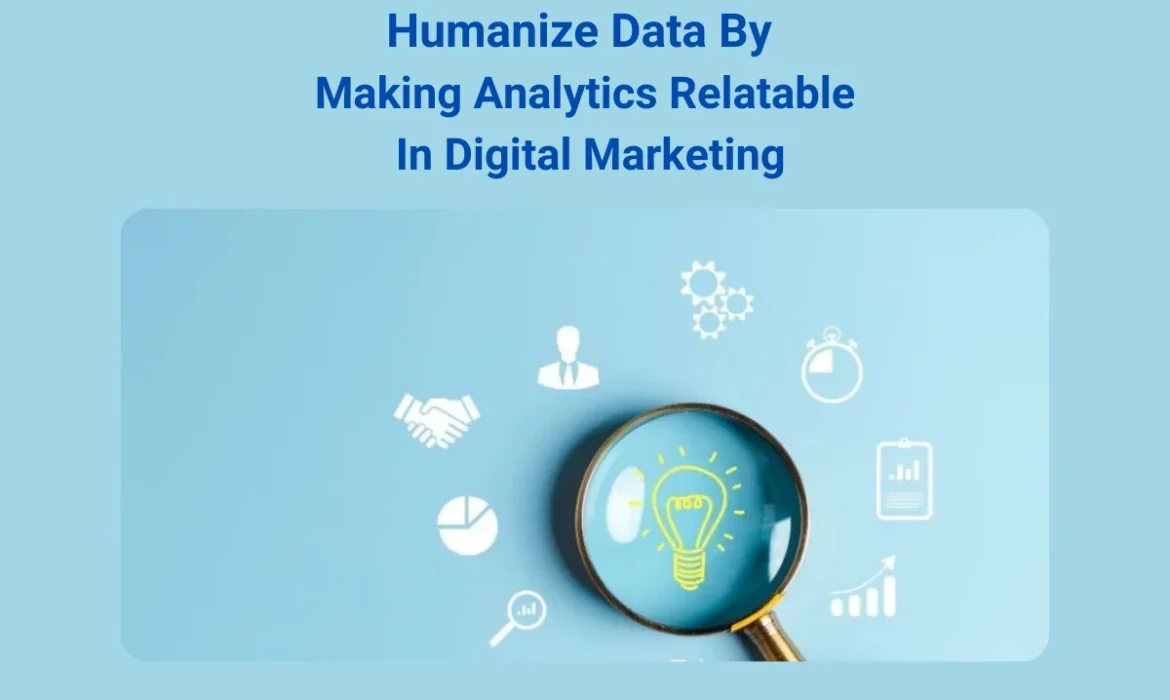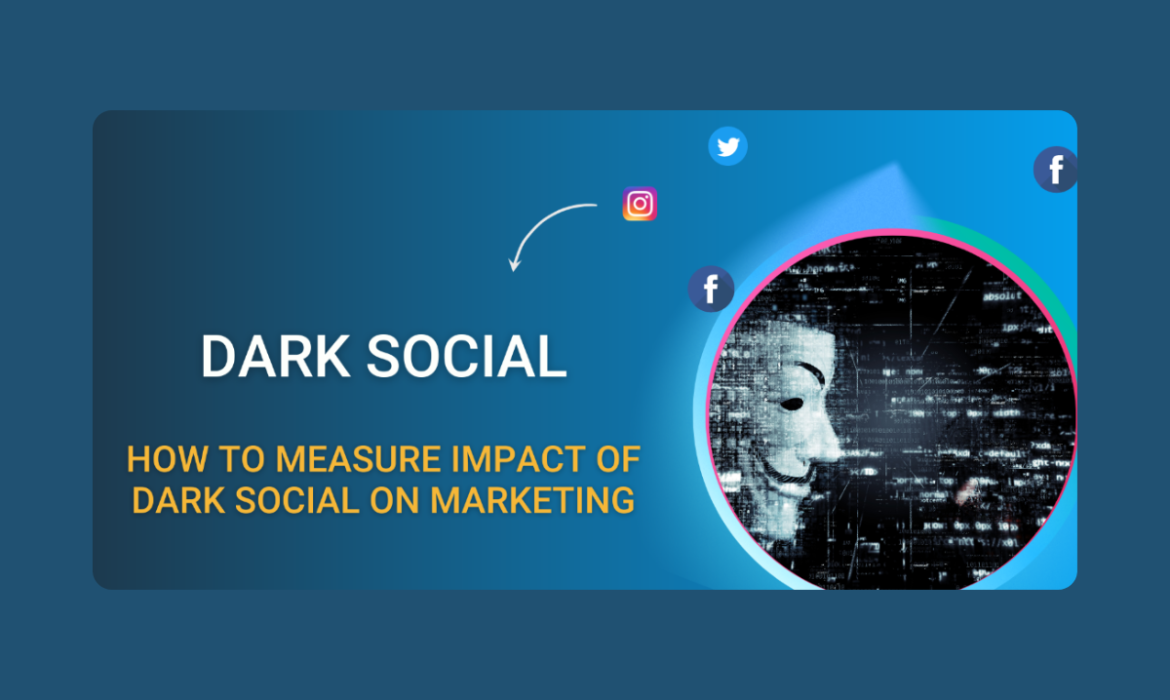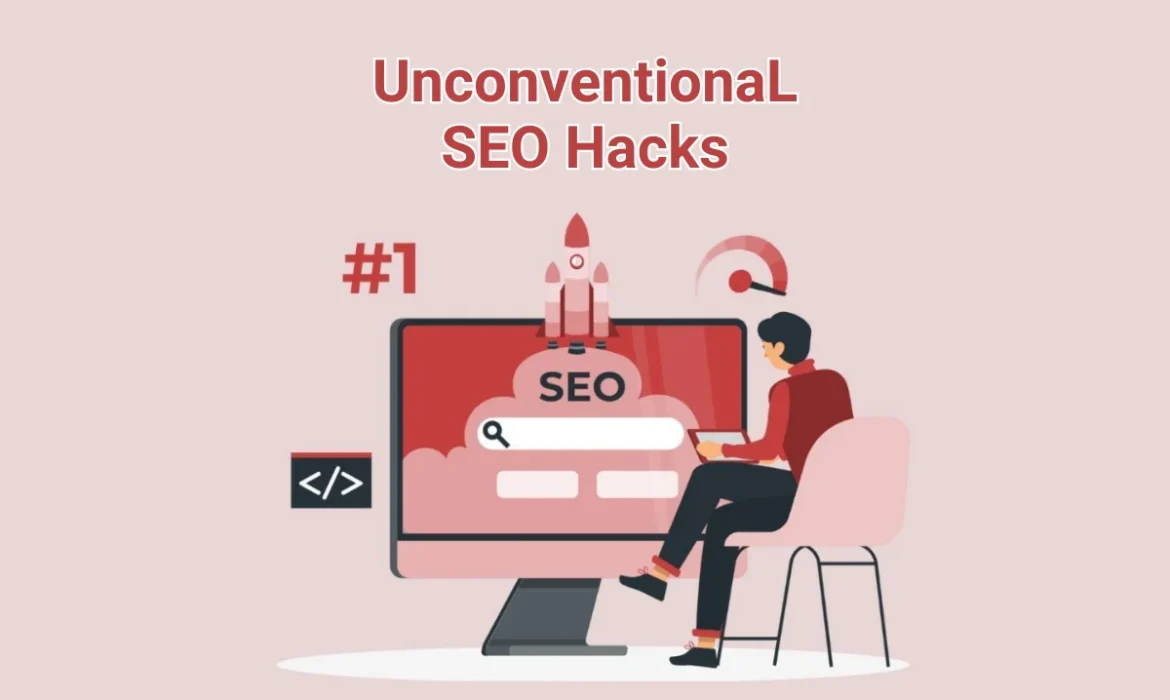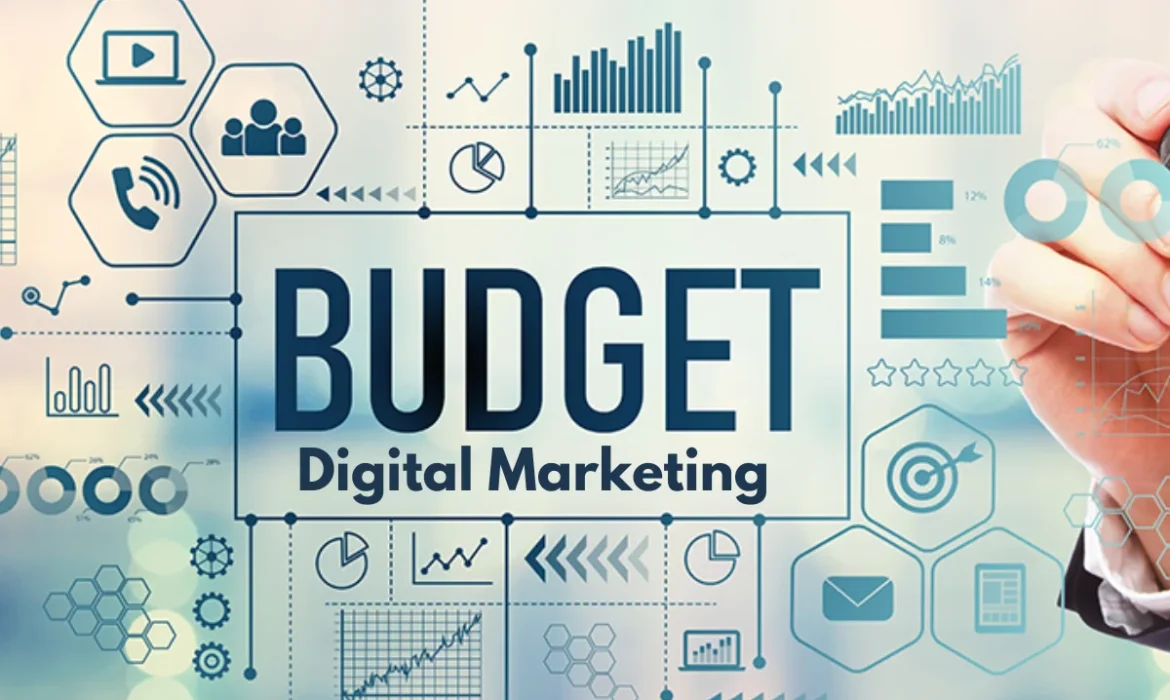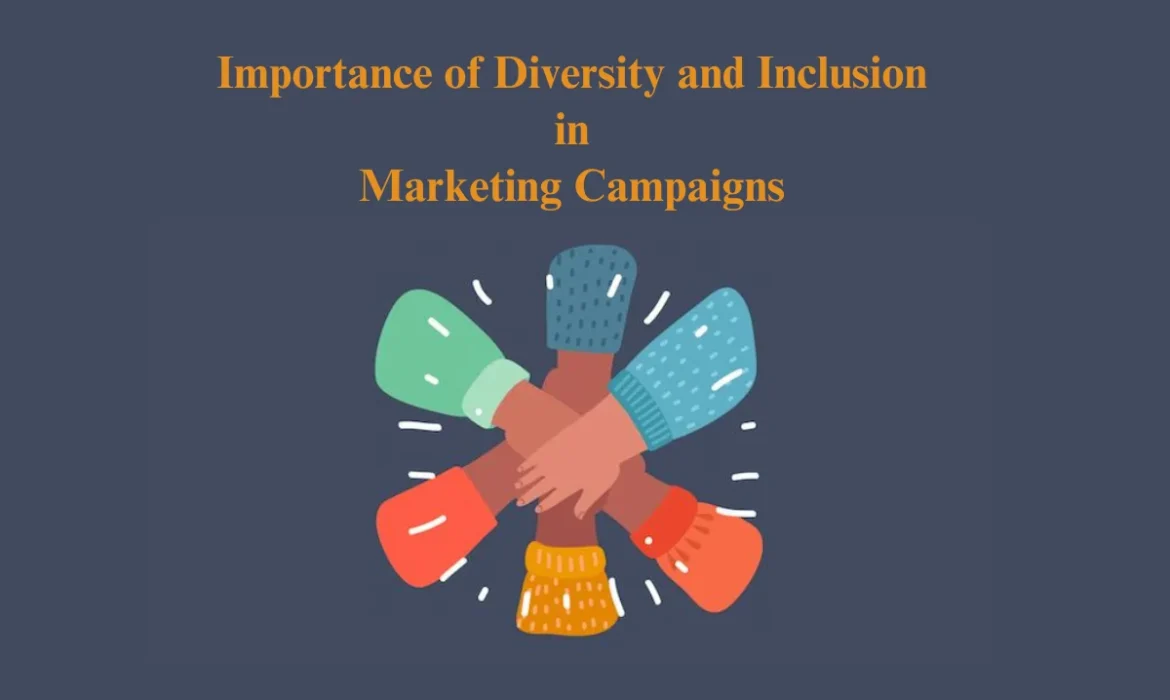Optimize Your Website for Mobile-First Indexing
The switch to mobile-first indexing by search engines reflects the growing trend of users accessing websites via mobile devices. Therefore, to maintain and improve your search engine rankings, it’s crucial to optimize your website for mobile-first indexing.
This blog will guide you through the essential steps to ensure your website is optimized for mobile-first indexing
What is Mobile-First Indexing
Mobile-first indexing means that Google primarily uses the mobile version of the content for indexing and ranking. This shift is significant because it affects how your site is evaluated and ranked. Below we will explain what is the reason behind the importance of mobile-first indexing in the digital world.

Why Mobile-First Indexing is Important?
Mobile-first indexing is important because it aligns with the growing trend of users accessing websites via mobile devices. Google now prioritizes the mobile version of a website for indexing and ranking, which means that if you don’t optimize your website for mobile-first indexing, a poorly optimized mobile site can negatively impact your search rankings. Ensuring your site is mobile-friendly helps maintain visibility, user experience, and competitiveness in search results.
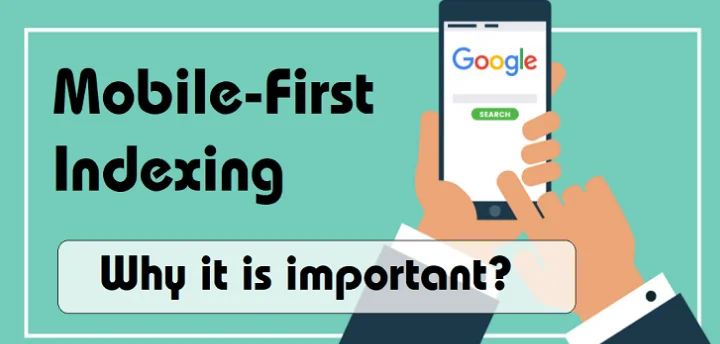
Responsive Web Design
Responsive web design ensures that your website’s layout adjusts to different screen sizes, providing a consistent user experience across devices. This is a fundamental step in mobile optimization. Mobile users expect fast-loading websites. Slow load times can negatively impact user experience and rankings. Use tools like Google PageSpeed Insights to identify and fix issues that may slow down your site.
| Point | Explanation |
| Responsive Web Design | Responsive web design ensures that your website automatically adjusts its layout and content based on the screen size of the device being used. This creates a seamless experience for users, whether they are on a desktop, tablet, or smartphone. |
| Consistent User Experience | By adapting to different devices, responsive design provides a consistent user experience, ensuring that all visitors have access to the same content and functionality, regardless of their device. This improves user satisfaction and engagement. |
| Mobile Optimization | Mobile optimization is crucial for ensuring that websites perform well on mobile devices. This includes not only responsive design but also other factors like fast load times, touch-friendly interfaces, and easy navigation. |
| Impact of Slow Load Times | Slow-loading websites can frustrate users and lead to higher bounce rates. Google PageSpeed Insights and other tools can help identify elements causing delays, such as large images or inefficient code, allowing you to make necessary improvements. |
Prioritize Mobile Usability
Your website should be easy to navigate on mobile devices. Ensure that buttons are easily clickable, text is readable without zooming, and users can quickly find what they’re looking for. Structured data helps search engines understand your content better.
Ensure that the mobile version of your site includes the same structured data markup as the desktop version to maintain consistency.
Avoid Intrusive Interstitials
Pop-ups that cover the main content can frustrate mobile users and lead to higher bounce rates. Avoid using intrusive interstitials to improve user experience and maintain good rankings. Mobile users often search for local businesses.
Ensure your site is optimized for local SEO by including relevant keywords, having a Google My Business profile, and ensuring your NAP (Name, Address, Phone) information is consistent across the web.
Implement AMP (Accelerated Mobile Pages)
AMP is a technology that helps pages load faster on mobile devices. Implementing AMP can improve load times and potentially boost your rankings in mobile search results. Regularly test your site’s performance on mobile devices using tools like Google’s Mobile-Friendly Test. This will help you catch and fix any issues before they impact your rankings.

Monitor Mobile Analytics
Use Google Analytics to monitor mobile traffic and user behavior. This data will help you understand how mobile users interact with your site and identify areas for improvement. Ensure that the content on your mobile site matches the desktop version. Google uses the mobile version for indexing, so missing content could affect your rankings.

- Track Mobile Traffic Patterns: Use Google Analytics to analyze mobile traffic, identifying trends in user behavior and engagement on your site, which can reveal how mobile users are interacting with your content.
- Identify Areas for Optimization: Monitor metrics like bounce rate and session duration to pinpoint areas where your mobile site may need improvement, helping you enhance user experience and performance.
- Ensure Content Consistency: Verify that the mobile version of your site has the same content as the desktop version, as Google relies on the mobile content for indexing and ranking, ensuring no critical information is missing.
Minimize Mobile Redirects
Excessive redirects can slow down page load times. Minimize the number of redirects on your mobile site to improve performance and user experience. Large images and media files can significantly slow down your site on mobile devices. Compress these files without sacrificing quality to enhance load times.
Optimize CSS and JavaScript
Optimize your CSS and JavaScript for mobile devices by minimizing file sizes and removing unnecessary code. This helps improve site speed and functionality. Lazy loading delays the loading of images and other media until they are needed. This can speed up page load times on mobile devices and enhance user experience.

Conclusion
Optimizing your website for mobile-first indexing is no longer optional; it’s essential. By taking steps to optimize your website for mobile-first indexing, you can ensure that your site remains competitive in search engine rankings and provides a seamless experience for mobile users. Regular monitoring and updates will help you stay ahead of the curve in this mobile-first world.
Read more : How Marketing Automation Enhances Your Strategy
FAQs
Mobile-first indexing means that search engines like Google predominantly use the mobile version of your site for indexing and ranking.
Mobile users expect fast load times. Slow pages can lead to higher bounce rates and lower search rankings.
You can use Google’s Mobile-Friendly Test tool to check if your site is optimized for mobile devices.
AMP (Accelerated Mobile Pages) is a technology that helps pages load faster on mobile devices. Implementing AMP can improve load times and potentially boost mobile rankings.

Alex Mitch
Welcome to my blog! With over 10 years in digital marketing, I’ve seen its incredible impact on smaller businesses. Join me as we explore how digital marketing can grow your audience and boost your business. Whether you’re an experienced entrepreneur or just starting out, you’ll find practical tips and insights to enhance your digital marketing strategies.
How Marketing Automation Enhances Your Strategy
Marketing automation helps experts accomplish better results with minimum effort. Automation refers to the process of streamlining repetitive marketing tasks to save time and improve efficiency.
Automating your marketing efforts helps reach more customers in less time and raise brand awareness. This productive approach creates meaningful user journeys increasing conversions.
Wondering how you can benefit from marketing automation? Let’s find out
Understanding Marketing Automation
Marketing automation is the practice of using software to organize manual tasks and categorize the entire workflow. It involves setting up and managing marketing campaigns over various channels with accuracy and in less time.
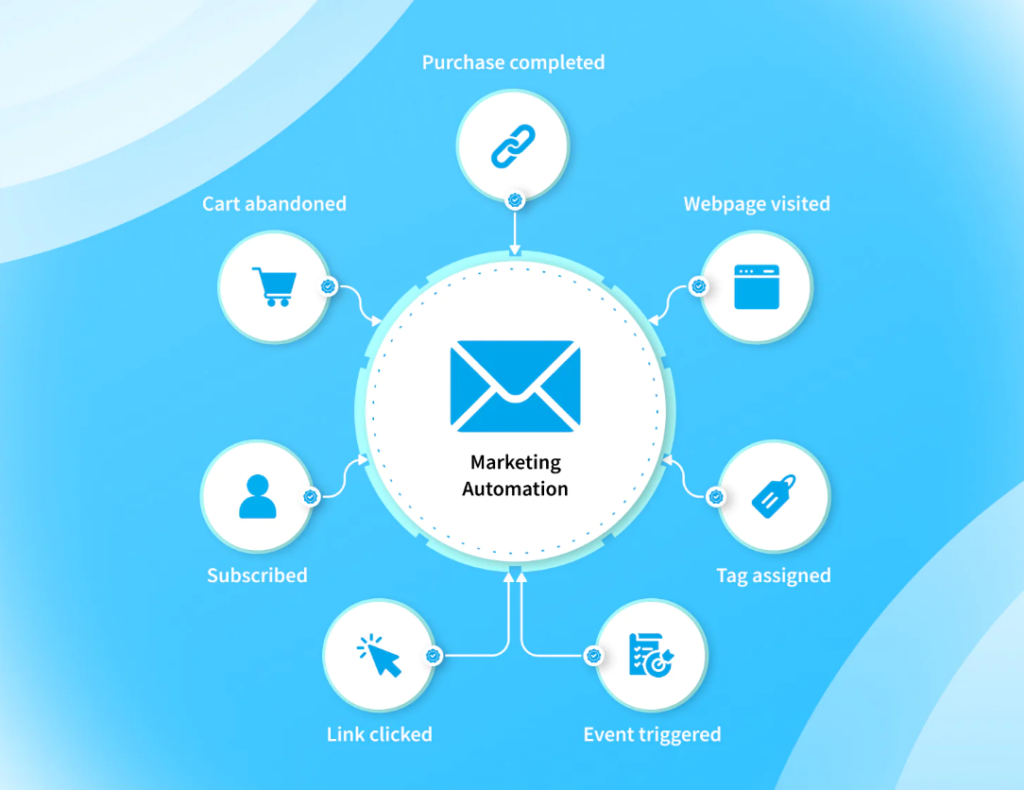
Nowadays, companies are using it as a weapon to organize their operations and boost audience engagement. Moreover, these software/tools help you create a personalized user experience to grab their attention.
Consequently, you will enjoy huge website traffic, more brand loyalty, and the highest sales in the competitive digital world.
6 Important Elements of Marketing Automation
Here are the key concepts of marketing automation for a better understanding
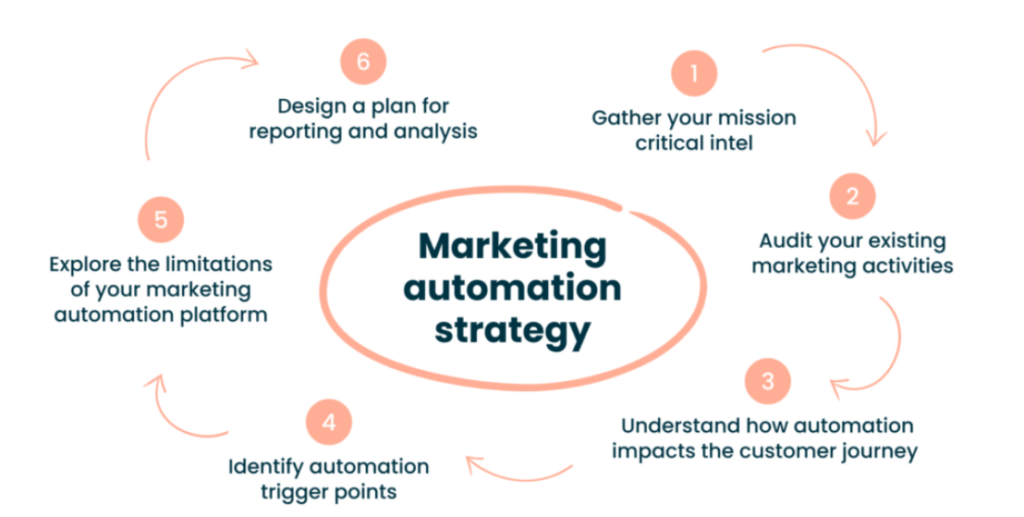
1. Information Gathering: Marketing automation involves collecting information of your targeted audience such as their age, gender, demographics, and interests
2. User Segmentation: once you have collected the information, you can segment it based on above-mentioned characteristics.
3. Campaign Setup: based on customer segmentation, marketer set up their campaign which includes emails, social media posts, or personalized short/long-form content to grab the user’s attention
4. Lead Scoring: When you start getting leads from campaigns, your software will categorize them by assigning a specific score to each lead. It will help you to differentiate leads based on scoring.
5. Personalized Content Sharing: Through automation, marketers can produce personalized content, designed according to user preferences. The content can be in any form such as a blog, article, product description, or newsletter.
6. Analytics and Optimization: regular evaluation of your campaign is essential to achieve success. Therefore, marketers assess numerous metrics such as conversion rates, and click-through rates, and optimize campaigns when required.
Boosting Your Business with Marketing Automation
Besides reducing your time and increasing efficiency, marketing automation can bring several benefits to boost your business success.

Simplifies Lead Scoring Process
Marketing automation helps you in effective leads targeting and identifying strong leads. The software assigns a score to every lead based on its success rate. Finally, the data is shared with the sales team to convert the customer.
For instance, a lead showing more user engagement like signing up for webinars, reading all your emails, and visiting your website landing page will be a hot lead. On the other hand, leads not meeting these criteria will be considered as cold leads.
Customer Base Segmentation
Marketing automation fully facilitates targeted user segmentation, helping marketers to design strategies for different audience groups. This allows marketing experts to develop a strong relationship with users by segmenting them on the basis of location, age, and gender.
For instance, a garment store may offer more variety of youngster clothes as compared to the old adults.
Customer Retention
Marketing is about bringing in new customers and retaining the old ones as well. Through marketing automation, companies introduce loyalty programs to increase brand loyalty amongst old customers.
This approach also paves the way for upselling and cross-selling leading towards developing lasting relations with customers.
Revenue Growth
Generating massive revenue is the objective of every digital marketing professional. Marketing automation plays a major role here by reducing the gap between sales and marketing teams. It helps in campaign optimization and supercharges the lead-generation process.
Marketing automation also enables the experts to guide the potential customer throughout the buying journey and increase high-quality leads.
How to Implement a Marketing Automation Platform
Knowing such benefits of marketing automation may urge you to deploy software in your agency and start enjoying the outcomes. We are about to disclose the steps for your ease.

Identify Your Sale Process:
You need to understand everything about your sales process, an automation software is beneficial only when it aligns with your sales strategy. For instance, a business with a long sales cycle can automate numerous interactions. Companies with short sales cycles can use automation for various tasks like promotional updates.
Know Your Audience:
Marketing automation revolves around providing a smooth user experience. Know everything about your audience such as their interests, age, and needs. This knowledge will help you to create a marketing strategy that delivers appreciable results.
Draw Your Strategy:
Develop a comprehensive marketing automation strategy by considering the audience’s interests at every stage of the funnel. Make sure that you are evaluating the user demands when implementing your marketing strategy.
Content Creation:
Content remains the main part of your marketing strategy. Whether it’s in the form of a blog post, article, or product description. You need to generate human-friendly content that can solve user problems.
Conclusion
Marketing automation has revolutionized the way businesses engage with their audience. By streamlining repetitive tasks, providing valuable insights, and allowing for personalized customer experiences, it enables marketers to focus on strategy and creativity.
The integration of automation into your strategy not only boosts efficiency but also drives higher ROI and customer satisfaction. As the digital landscape continues to evolve, leveraging marketing automation is key to staying competitive and responsive to customer needs.
Read more : The Role of UX/UI in Digital Success
FAQs
Marketing automation refers to the use of software and technology to automate repetitive tasks, such as email campaigns, social media posts, and lead management, to enhance efficiency and effectiveness.
Automation allows for personalized communication based on customer behavior and preferences, leading to more relevant interactions and higher engagement rates.
Yes, automation can significantly benefit small businesses by saving time, improving efficiency, and allowing them to compete with larger companies by delivering personalized experiences at scale.
Key features include email marketing, customer segmentation, lead scoring, analytics, and integration with CRM systems, ensuring comprehensive and effective marketing strategies.

Alex Mitch
Welcome to my blog! With over 10 years in digital marketing, I’ve seen its incredible impact on smaller businesses. Join me as we explore how digital marketing can grow your audience and boost your business. Whether you’re an experienced entrepreneur or just starting out, you’ll find practical tips and insights to enhance your digital marketing strategies.
The Role of UX/UI in Digital Marketing Success
Every brand strives to accomplish success in the digital landscape. Apart from SEO and paid ads, you need to focus on an important aspect. UX (User experience) and UI (User interface) are two crucial pillars for digital marketing success. Both have a direct impact on audience engagement and business sales.
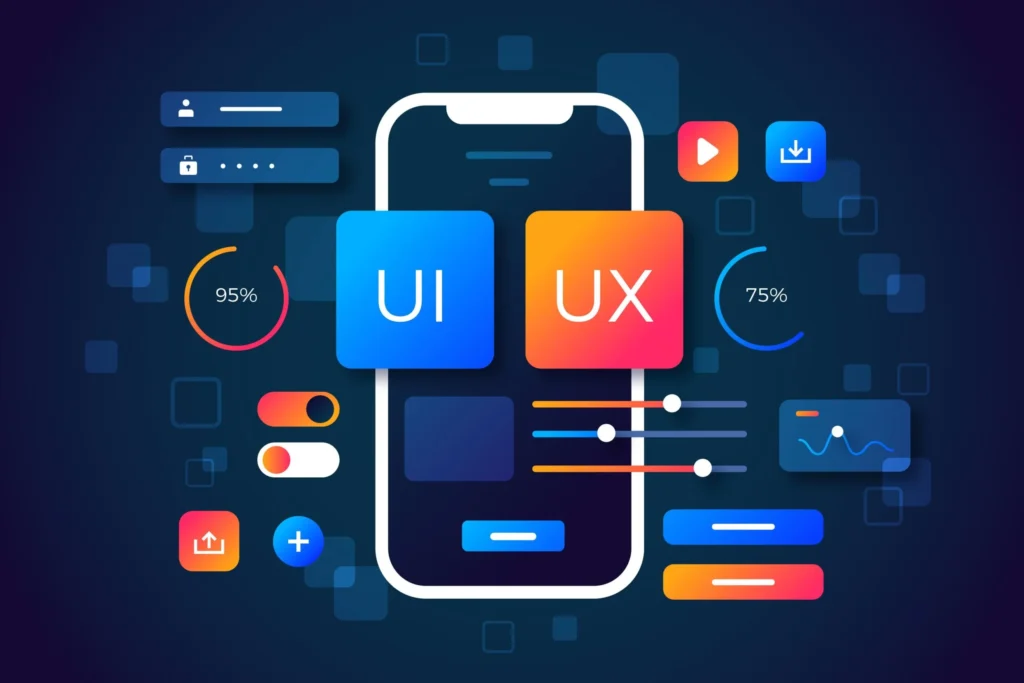
A well-designed UX/UI leads to a smooth user experience and increases customer brand loyalty. This article will explain how UX/UI can reshape the audience experience towards your brand.
Understanding UX/UI
User experience design refers to creating the experience a user has when he visits your website or application. The purpose of UX design is to offer a smooth user experience when he/she interacts with your products.

Why is there so much emphasis on UX/UI when SEO can increase a website’s ranking in SERP? Google also advices that websites should be helpful for the audience in every aspect such as design, loading speed, navigation, etc. Therefore, every digital expert ensures its website has a perfect UX/UI.
Key Aspects of UX/UI Contributing to Digital Marketing Success
In today’s evolving era, focusing on UX/UI is a necessity to accomplish sustainable growth in the digital world. Therefore, your website must include various important UX/UI elements. Below we will explain them in detail
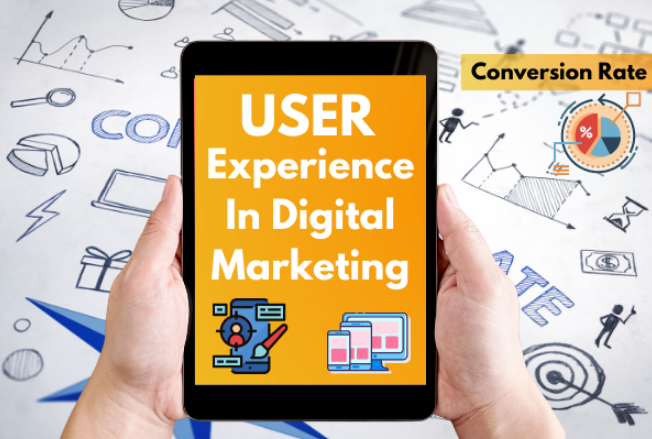
User-Friendly Approach
As the name suggests, user friendly approach means knowing everything about the audience like their demands, goals, and preferences. Businesses can use this precious knowledge to craft a personalized experience for the users.
You can also customize your website content according to the audience requirements. Moreover, implementing customer friendly approach in UX/UI design provides multiple advantages
- Higher Sales
- Customer satisfaction
- Efficiency
- More User Engagement
Mobile Responsiveness
Mobile responsiveness is very important for your brand’s success. Even google emphasizes that your website should fit to any mobile screen size. It is because the audience is now using mobile phones instead of laptops to find out their desired products.
A website that fails to fit on mobile and loads slowly frustrates the users. On the other hand, a mobile responsive website retains your customers and increases their loyalty towards your brand. Which leads to improved user engagement and drives high-quality leads.
A mobile responsive website also offers accessibility to the user, enabling them to navigate through every website page with ease. Therefore, every brand focuses on making their websites more responsive and accessible to the audience.
Consistency
When it comes down to UX/UI, consistency and simplicity are essential for offering a seamless user experience. Providing a simple and consistent design helps user to interact with a specific product/service and understand its purpose.
Such simple interaction saves user time and makes him trust your website. Which leads to an increased user experience and often results in conversion.
Reduces Bounce Rates
High bounce rates often indicate that users are not finding value or facing difficulties in navigating a website. Effective UX/UI design minimizes these issues by creating a user-friendly environment, encouraging visitors to stay longer and explore further.
A positive user experience leads to satisfied customers. When users find it easy and enjoyable to interact with your digital platform, they’re more likely to return and recommend your site to others, driving organic growth.
Key Elements of Effective UX/UI Design
Responsive Design
With the majority of users accessing websites via mobile devices, responsive design is crucial. Your website should provide an optimal viewing experience across all devices, ensuring users can navigate easily whether they’re on a smartphone, tablet, or desktop.

Intuitive Navigation
Users should be able to find what they’re looking for with minimal effort. Intuitive navigation involves clear menu structures, easy-to-find buttons, and a logical flow from one section of the site to another.
Fast Loading Times
Slow-loading websites frustrate users and lead to higher bounce rates. Optimizing images, minimizing code, and leveraging caching are some ways to ensure your site loads quickly, keeping users engaged.
How to Optimize UX/UI for Digital Marketing Success
Understand your audience’s needs, preferences, and pain points through surveys, interviews, and usability tests. This insight helps you tailor your UX/UI design to meet their expectations.

With mobile users dominating web traffic, ensure your site is mobile-friendly. Test your site’s responsiveness, load times, and navigation on various devices to provide a seamless experience. UX/UI trends evolve, and so do user expectations. Regularly update your design to keep it fresh, modern, and aligned with current best practices.
Test different design elements, such as CTAs, layouts, and color schemes, to see what resonates best with your audience. A/B testing allows you to make data-driven decisions to improve your UX/UI.
Ensure your website is accessible to all users, including those with disabilities. Implement features such as screen reader compatibility, alt text for images, and easy-to-read fonts to enhance inclusivity.
Conclusion
In the realm of digital marketing, UX/UI design is a powerful tool that can significantly influence your business’s success. By focusing on creating a seamless, enjoyable experience for users, you not only improve engagement and conversion rates but also build a strong, trustworthy brand. Investing in UX/UI is essential for any business looking to thrive in the competitive digital landscape accordingly.
Read more : Humanize Data By Making Analytics Relatable In Digital Marketing
FAQs
UX/UI design enhances user engagement, boosts conversion rates, and improves brand perception, all of which are crucial for digital marketing success.
Good UX/UI design improves site speed, mobile-friendliness, and ease of navigation, all of which are important ranking factors for search engines.
Key elements include responsive design, intuitive navigation, fast loading times, clear CTAs, and consistent design elements.
You can improve UX/UI by conducting user research, focusing on mobile optimization, regularly updating your design, implementing A/B testing, and prioritizing accessibility.

Alex Mitch
Welcome to my blog! With over 10 years in digital marketing, I’ve seen its incredible impact on smaller businesses. Join me as we explore how digital marketing can grow your audience and boost your business. Whether you’re an experienced entrepreneur or just starting out, you’ll find practical tips and insights to enhance your digital marketing strategies.
Humanize Data By Making Analytics Relatable In Digital Marketing
Behind every successful marketing effort lies a compelling story. While AI tools enable marketers to produce content quickly, there’s still a need for content that truly resonates with the audience and drives conversions. This article will cover everything you need to know about how to humanize data in marketing, ensuring your analytics connect with people on a deeper, more meaningful level.
What is Humanizing Marketing
As the name suggests, humanizing marketing refers to incorporating an emotional touch into your promotional content. The purpose is to make sure your content resonates well with the targeted audience.

In addition, it involves various components
- Monitoring
- Audience Feedback Management
- Crises Management
- Continuous Messaging
Importance of Humanizing Marketing Data
Humanizing data involves presenting information in a way that goes beyond mere numbers. It’s about connecting data with real-life scenarios, making it easier to understand and more relevant to your audience. When you humanize data in marketing, it not only enhances decision-making but also strengthens connections with your audience, leading to better engagement and customer loyalty.
Know Your Audience
Understanding your audience is the first step in making data relatable. By tailoring data to fit the preferences and needs of your target audience, you can present it in a way that speaks directly to them. Creating personas based on customer behavior, demographics, and preferences can help you visualize how different segments of your audience will perceive the data.
Use Storytelling to Present Data
Storytelling is a powerful tool for making data relatable. By crafting a narrative around your data, you can transform abstract numbers into a story that resonates with your audience. For example, instead of just stating that a particular marketing campaign led to a 20% increase in sales, tell the story of how that campaign addressed a specific customer pain point, leading to the sales boost.

Visualize Data Effectively
Visual elements like charts, graphs, and infographics are essential for making data relatable. They help to break down complex information into digestible visual formats that are easier to understand. When creating visualizations, focus on clarity and simplicity.
Choose the right type of visual representation for your data whether it’s a bar chart, line graph, or pie chart—to ensure your audience can quickly grasp the information.
Simplify Complex Data
Complex data sets can be daunting, but simplifying them can make a huge difference. Use tools that help in breaking down large data sets into smaller, more manageable pieces. Avoid jargon and technical terms that might confuse your audience. Instead, use plain language and relatable analogies to explain complex data points.
Connect Data to Real-world Scenarios
One of the best ways to humanize data in marketing is by connecting it to real-world scenarios. Show how the data applies to everyday situations or how it can solve common problems faced by your audience. For instance, if your data indicates that mobile traffic is increasing, discuss how optimizing for mobile devices can enhance user experience and drive conversions.
Leverage Emotional Appeal
Data doesn’t have to be dry and impersonal. By leveraging emotional appeal, you can make data more impactful. Use data to highlight the positive effects of your product or service on your customers’ lives. For example, sharing data on customer satisfaction can evoke a sense of trust and reliability in your brand.
Create Actionable Insights
Data should lead to action. By creating actionable insights, you can ensure that the data you present leads to meaningful marketing strategies. Provide clear, actionable steps that your audience can take based on the data. This not only makes the data more relatable but also ensures it has a tangible impact on your marketing efforts.
- Translate Data into Specific Actions: Break down complex data into clear, specific actions your audience can implement. For example, recommend optimizing website load time if analytics show high bounce rates due to slow speeds.
- Align Insights with Business Goals: Ensure that the actionable insights directly support your business objectives. If increasing conversions is a goal, use data to identify key areas for improvement.
- Provide Context and Recommendations: Always provide context for the data, explaining why certain actions are necessary. Pair this with practical recommendations, such as adjusting marketing channels
Collaborate Across Teams
Collaboration between teams is crucial in humanizing data. Marketing, sales, and customer service teams can work together to provide different perspectives on the data, making it more well-rounded and relatable. By sharing insights and working together, teams can create a more comprehensive narrative around the data.
Use Data to Tell a Brand Story
Integrating data into your brand’s story can make it more relatable and memorable. Share how data-driven decisions have positively impacted your brand and your customers. For example, you can tell the story of how analyzing customer feedback led to improvements in your product, resulting in higher satisfaction rates.
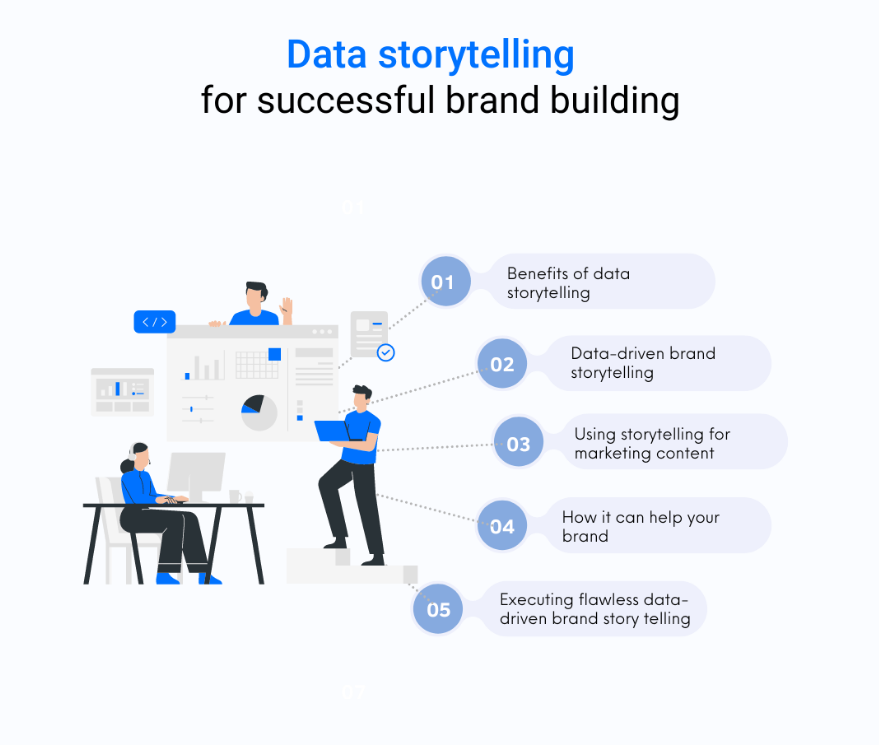
Measure and Refine Your Approach
Finally, it’s important to continually measure the effectiveness of your efforts to humanize data. Use analytics tools to track how your audience engages with the data you present. Based on this feedback, refine your approach to make your data even more relatable and impactful in future campaigns.
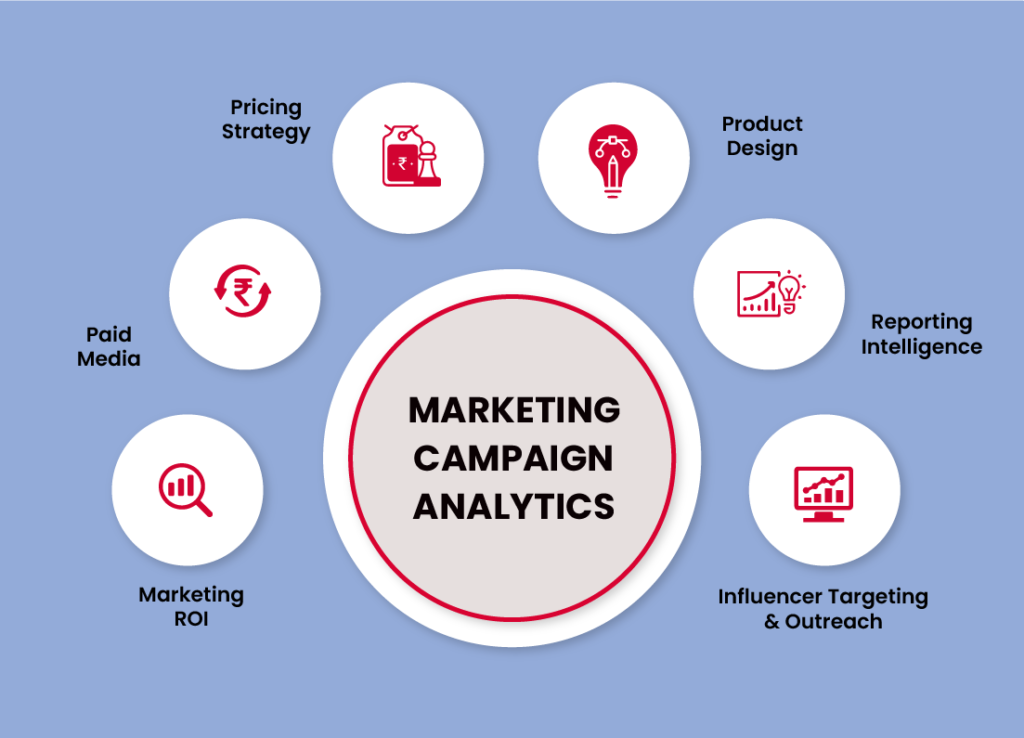
Conclusion
Humanizing data in digital marketing is crucial for turning analytics into actionable insights that truly resonate with your audience. By understanding your audience, using storytelling, visualizing data effectively, and connecting it to real-world scenarios, you can humanize data in marketing, making it more relatable and impactful. The goal is not just to present data, but to make it meaningful and actionable for your audience.
Read more: Why Dark Social is the Secret Weapon for Marketing
FAQs
Humanizing data involves presenting analytics in a way that is relatable, understandable, and actionable for your audience, rather than just showing numbers and statistics.
Storytelling turns raw data into a narrative, making it more engaging and easier for your audience to relate to and understand.
Visuals like charts and infographics simplify complex data, making it more accessible and easier to comprehend for your audience.
Simplify complex data by breaking it down into smaller, understandable parts, using plain language, and avoiding technical jargon.

Alex Mitch
Welcome to my blog! With over 10 years in digital marketing, I’ve seen its incredible impact on smaller businesses. Join me as we explore how digital marketing can grow your audience and boost your business. Whether you’re an experienced entrepreneur or just starting out, you’ll find practical tips and insights to enhance your digital marketing strategies.
Why Dark Social is the Secret Weapon for Marketing
In today’s digital landscape, marketers are always on the hunt for new strategies to reach their target audience. Amidst all the tactics and tools available, there’s one powerful yet often overlooked channel: Dark Social. Dark Social refers to the private sharing of content through channels like messaging apps, email, and direct messages.

While these interactions are hard to track, they play a significant role in spreading brand messages organically. In this blog, we’ll explore why Dark Social is the secret weapon for marketing, how to leverage it, and its impact on your overall strategy.
What is Dark Social?
Dark Social is the term used to describe the sharing of content through private channels that are difficult to track with traditional analytics tools. Unlike public sharing on social media platforms like Facebook or Twitter, Dark Social occurs in one-to-one or one-to-few environments such as:
- Messaging apps (WhatsApp, Messenger)
- Email (personal or work-related)
- Direct messages (Instagram, LinkedIn)
These channels are “dark” because they don’t provide referrer data, making it challenging for marketers to determine the source of traffic.
Why is Dark Social Important for Marketers?
Amplified Word-of-Mouth Marketing
Dark Social drives word-of-mouth marketing in a natural, trusted environment. When someone shares your content through a private message, it’s usually to a close friend or colleague. This type of sharing has a higher level of trust and engagement compared to public shares.

Targeting Niche Audiences
Dark Social allows you to reach niche audiences that are otherwise difficult to target. Since people share content with like-minded individuals, your content can naturally find its way to highly relevant and engaged users.
Increased Engagement and Trust
Content shared through Dark Social tends to have a higher engagement rate because it’s shared in a personal context. The receiver is more likely to engage with the content, leading to better brand awareness and potential conversions.
Authentic Conversations
Dark Social fosters authentic, private conversations about your brand. These discussions are often more genuine and less influenced by the noise of public platforms. As a result, your brand can build stronger relationships with its audience.
How to Leverage Dark Social in Your Marketing Strategy

Optimize Content for Sharing
To capitalize on Dark Social, ensure your content is shareable. Include clear and prominent share buttons for email, messaging apps, and direct messaging platforms. This encourages users to share your content within their private networks.
Track Dark Social Traffic
While Dark Social is difficult to track, you can still get insights by using tools like UTM parameters or short links to measure the traffic from these sources. Additionally, monitoring direct traffic in your analytics can help you gauge the impact of Dark Social.
Encourage Private Sharing
Prompt your audience to share your content privately by creating valuable, share-worthy content. Content that provides insights, solves problems, or offers unique value is more likely to be shared through Dark Social channels.
Challenges of Dark Social
Dark social comes with its own set of challenges as well. Below we are going to explain about it for a better understanding
Lack of Analytics
Dark Social is difficult to track because private shares don’t generate referral data. This lack of visibility makes it hard for marketers to measure the effectiveness of their campaigns and justify the return on investment (ROI). As a result, quantifying the impact of Dark Social on overall marketing efforts is challenging.
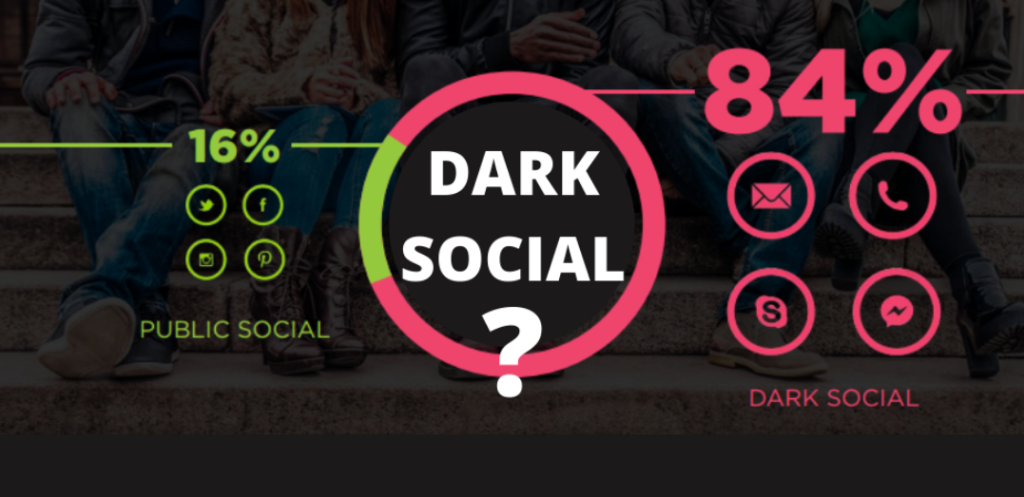
Privacy Concerns
Dark Social thrives on privacy, which means marketers must be cautious not to invade user spaces. Striking the right balance is key and leveraging Dark Social without compromising user trust is essential. Overstepping privacy boundaries can lead to negative perceptions, making it crucial to approach Dark Social marketing ethically.
Integration with Traditional Marketing Channels
Blending Dark Social with traditional marketing channels requires careful consideration. Since Dark Social involves private, untrickable shares, integrating it with public marketing efforts can be complex. Marketers need to ensure that their strategies respect the nature of Dark Social while maintaining a cohesive user experience across all platforms.
Content Creation for Dark Social
Creating content tailored for Dark Social is crucial for maximizing its impact. Since content shared through Dark Social is often more personal and meaningful, it should be highly relevant, engaging, and valuable. Crafting shareable content that resonates with users in private settings can significantly enhance brand reach and foster deeper connections.
Conclusion
Dark Social is indeed the secret weapon for marketing. While it poses some challenges in terms of tracking and analytics, the benefits far outweigh the drawbacks. By focusing on creating shareable content and encouraging private sharing, you can tap into the power of Dark Social to amplify your marketing efforts. As the digital landscape continues to evolve, those who leverage Dark Social will be better positioned to engage with their audience in a more meaningful and authentic way.
Read more ; Voice Search Optimization for Conversational Queries
FAQs
Dark Social refers to the private sharing of content through channels like messaging apps, email, and direct messages that are difficult to track.
Dark Social is important because it drives word-of-mouth marketing, allows you to reach niche audiences, and fosters authentic conversations.
You can track Dark Social traffic by using UTM parameters, short links, and monitoring direct traffic in your analytics tools.
The main challenges include a lack of analytics, privacy concerns, and difficulty integrating with traditional marketing channels.

Alex Mitch
Welcome to my blog! With over 10 years in digital marketing, I’ve seen its incredible impact on smaller businesses. Join me as we explore how digital marketing can grow your audience and boost your business. Whether you’re an experienced entrepreneur or just starting out, you’ll find practical tips and insights to enhance your digital marketing strategies.
Unconventional SEO Hacks That Drive Results
SEO (Search Engine Optimization) is a powerful tool to increase your website visibility and drive organic traffic. However, with rapid evolutions in technology, SEO is becoming more complex than ever before. Nowadays, every brand is implementing solid strategies to remain ahead of others. That’s why it’s essential to go beyond the basics and explore unconventional SEO hacks that drive results. Traditional tactics alone won’t cut it anymore. Creativity, innovation, and a willingness to experiment are now the keys to achieving top search engine rankings.
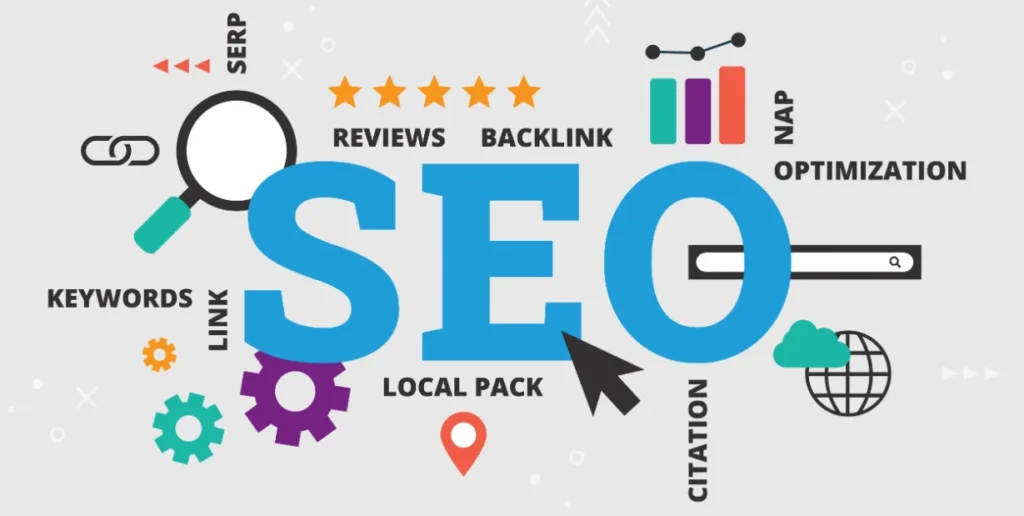
This article will uncover some unconventional SEO hacks that can actually boost your website visibility in the digital world.
What are Unconventional SEO Hacks
2024 marks the year of immense technological advancement. Where we have witnessed rapid transformations in every industry. On the other hand, audience expectations also changed with time. They don’t get fascinated by a plain block of text or fancy images.

That is where you need to go beyond then employing basic SEO practices. Some highly recommended Unconventional SEO hacks include podcasts, emoji SEO, FAQ Pages.
Podcast Transcripts
Podcasts are video content that we often see over YouTube. They may not be effective as per SEO practice. While transcribing your podcast can increase the opportunity of a higher ranking for different keywords. These days, business owners post podcast transcript as a blog on their websites.

How podcast transcription can increase website rankings? For instance, you had done a post cast with a professional cricketer. You can upload it over your website and earn high rankings for cricket or how to become a successful batsman etc.
FAQ Pages
FAQ (frequently asked questions) are a very crucial component of SEO. These are questions addressing common issues the audience is facing. It could be anything like the importance of SEO, how to do SEO etc.
Therefore, craft your FAQ page in a way that it aligns with the user query. Moreover, including your targeted keywords into the FAQS, it will lead to a higher search visibility and SERP rankings Some experts suggest to write long answers of these questions.
It increases your chances of ranking with long-term keywords and appearing in the google answer box.
Google Discover Optimization
A free tool by google that offers a great opportunity for bringing organic website traffic without searching. Therefore, you need to focus on optimizing your website for google discovery. Produce fresh content that helps your user by solving their problems.

When your content starts helping the audience, they become your long-term followers and potential customers. Your content should include stunning visuals that compel the audience to land on your website.
Augmented Reality
AR is a technology that offers you a real time experience of a product or place. Leverage AR to boost your SEO efforts and enhance user experience. In addition, google is also indexing AR content without any trouble.
Start creating AR experiences about your brand or product and get a chance to rank higher in SERP. Leverage Augmented reality offers your audience a great and interactive experience. It can buy anything such as a site tour or a product demo.
Featured Snippet
Feature Snippet is a small portion of a text appearing at top of google search results to answer a specific query. Targeting feature snippets is an effective way to increase your click through rate. Find out the questions relevant to your industry and answer them in detail.
Pay attention to your content formatting and structure proper headings, and concise bullet points. A well-written answer with proper format increases your chances of getting noticed by search engines.
Leveraging Topic Clusters for Authority Building
Topic clusters are a content strategy that involves creating a series of related articles around a central topic, linking them to a core pillar page. This approach helps search engines understand the depth of your content, boosts your site’s authority, and improves rankings across multiple keywords.
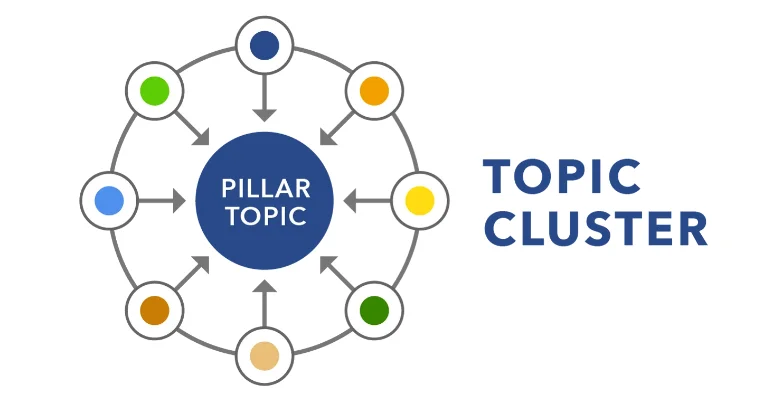
Implementing Semantic SEO for Better Contextual Understanding
Semantic SEO focuses on the intent behind a user’s search rather than just the keywords. By optimizing content for related terms and concepts, you can improve search visibility. Tools like Google’s Natural Language API can help identify and target related entities, ensuring your content aligns with user intent.
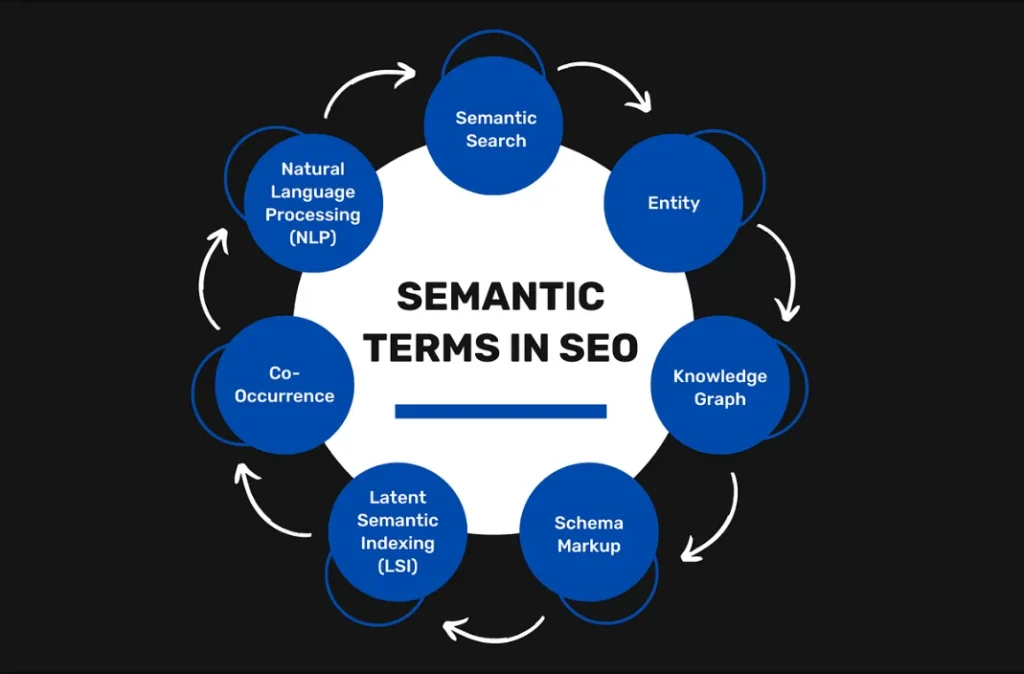
Importance of Unconventional SEO techniques
Unconventional SEO techniques are crucial for standing out in today’s competitive digital landscape. While traditional methods like keyword optimization and link building remain important, they alone are no longer enough to achieve top rankings. Unconventional strategies, such as semantic SEO, visual search optimization, and interactive content, allow businesses to tap into new audiences and provide a richer user experience.
These techniques help search engines better understand content context, improve user engagement, and drive more targeted traffic. Additionally, embracing innovations like AI and voice search optimization keeps businesses ahead of trends, ensuring they remain competitive as technology and user behavior evolve.
Ultimately, integrating these advanced strategies into your SEO approach not only enhances your site’s visibility but also builds a stronger, more adaptable online presence that can thrive in a dynamic and ever-changing environment.
Conclusion
Unconventional SEO hacks are no longer just optional add-ons; they are essential for staying ahead in a rapidly evolving digital landscape. By leveraging these innovative strategies, you can enhance your website’s visibility, improve user engagement, and ultimately drive more traffic to your site.
Read more : Voice Search Optimization for Conversational Queries
FAQs
Topic clusters involve creating a series of related articles linked to a central pillar page. This strategy helps search engines understand the depth of your content and boosts your site’s authority.
Semantic SEO focuses on the intent behind search queries rather than just keywords, optimizing content for related terms and concepts to improve search visibility.
Visual search allows users to find information through images. Optimizing images with descriptive alt text and proper file names can help you capture this growing audience.
AI tools can create contextually relevant content and predict trends, while machine learning algorithms can optimize your SEO strategy based on data analysis.

Alex Mitch
Welcome to my blog! With over 10 years in digital marketing, I’ve seen its incredible impact on smaller businesses. Join me as we explore how digital marketing can grow your audience and boost your business. Whether you’re an experienced entrepreneur or just starting out, you’ll find practical tips and insights to enhance your digital marketing strategies.
Voice Search Optimization for Conversational Queries
Over time, voice search has become a big player in the digital world. Today, over 40% of people use voice commands to find what they need, thanks to tools like Amazon Alexa, Google Home, and Apple’s Siri. This shift is transforming the way we search online, but it also brings new challenges, especially for those relying on Pay Per Click advertising. In this article, we’ll dive into everything you need to know about Voice Search Optimization and how to stay ahead of the curve.
What is Voice Search Technology?
Voice search technology converts spoken queries into digital information. Nowadays, there are various products available with voice search technology. Have you wondered why this voice search is getting immense popularity?
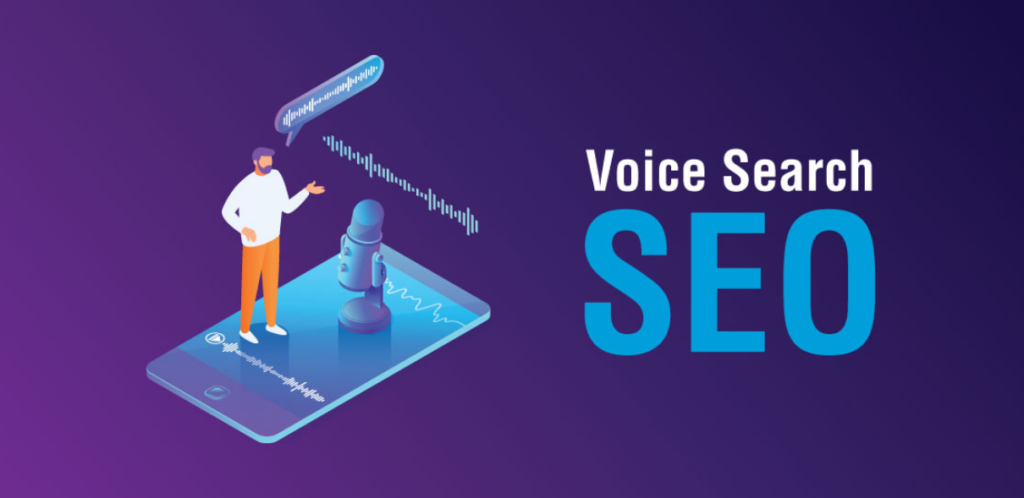
It is because putting voice query is simple as compared to typing. In addition, voice allows you to search for specific locations and get accurate answers. In simple words, it is user friendly for those who don’t prefer wasting time in typing queries.
Importance of Voice Search Optimization
Voice search optimization refers to improving your website content to increase website visibility in voice results. SEO experts and marketers should know that people talk differently than writing. It means SEO emphasizes on how users pronounce common search terms.
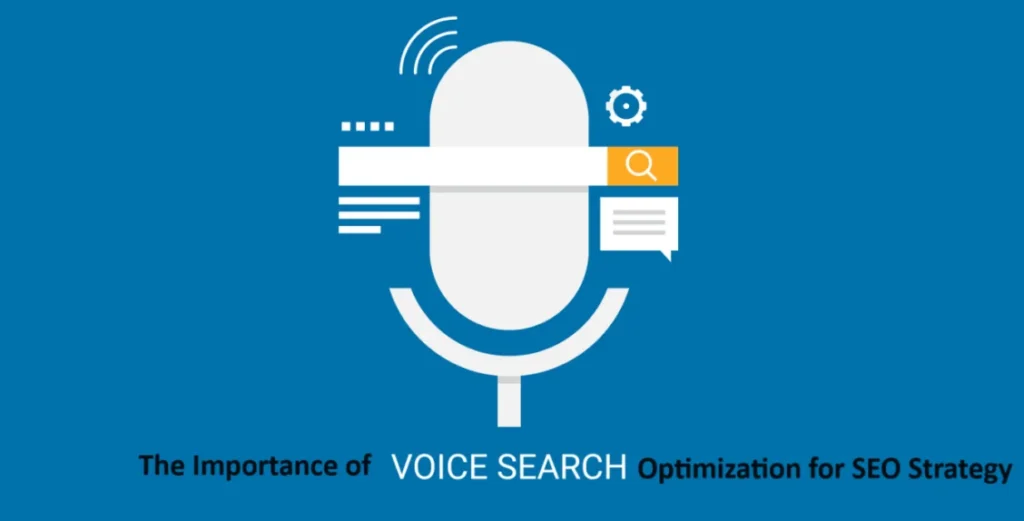
Let’s suppose you will type a cricket bat shop near me, In the voice you may ask Hey Siri! Please tell me where I can find a shop that offers cricket bats. We have seen that voice searches are longer than texts. Therefore, focus on finding long term keywords rather than going with broad matches.
Here are other reasons why you should pay attention to voice search optimization
- Increasing number of voice search queries
- Offers a competitive advantage over others
- Increases audience engagement
- Brings more traffic
- High quality leads
We have learned about the advantages of optimizing your website for voice search. You may wonder what strategies you should implement.
Effective Tips for Voice Search SEO
Choose Long Tail Keywords
Since we are talking about Voice search SEO, going for long-tail keywords is perfect. It is because voice assistants are capable of handling long and casual queries. Therefore, find out long phrases and incorporate them into your content.

There are numerous tools available for you to get assistance. These include Answer the public and People Also asked. Each platform offers tons of long phrases that you can use for your voice search SEO.
Helpful Content
Google prefers content that helps users by solving their problems. Rather it is text, voice or videos, sharing informative content is a necessity. Perform in-depth research about the service/product about which you are going to produce content.

You can use frequently asked questions to find out what the users are searching for. FAQ (frequently asked question) is kind of a google feature that shows questions and answers searched by the individuals.
Local SEO
Local SEO is perfect for new businesses, struggling to rank higher. According to Search engine land 50% of the voice users have local intent. Therefore, optimize your content with local phrases or location specific phrases.
Updating your google my business profile is also a plus. It is a free google service allowing businesses to include and optimize their information like Name Address and Phone number. Optimizing GMB profile increases your chances of ranking in local search results.
Schema Markup
Incorporate structured data markup to help search engines know more about your website and increase your chances of ranking on top. Through schema markup you can enhance search engine comprehension of your content and improve online presence in search engine results.
Mobile Responsive Website
Mobile responsiveness means your website should fit to every type of mobile screen. In addition, it should load faster whenever a user lands on it. Google emphasizes that your website should be mobile friendly. These days, everyone uses smartphones for internet search.
Therefore, optimize your website so it can load faster and attract more voice search traffic. On the other hand, slow loading websites only frustrate the customer and increase bounce rate.
Embrace Natural Language
Since voice searches are conversational, your content should reflect this by using natural, everyday language. Avoid jargon and complex phrases. Instead, write as if you’re having a conversation with your audience. This approach not only improves your chances of ranking in voice search but also makes your content more relatable and engaging.
Optimize for Question-Based Queries
Voice searches often begin with questions like “how,” “what,” “where,” and “why.” Structure your content to answer these questions directly. Including a FAQ section on your website can be particularly effective for capturing voice search traffic.

Conclusion
The voice search revolution is changing how people interact with technology, and businesses must adapt to stay relevant. By focusing on conversational queries, optimizing for natural language, and leveraging local SEO, you can enhance your visibility in voice search results and connect more effectively with your audience. Above we have explained key tips for Voice Search SEO for a better understanding.
As voice search continues to grow, those who embrace these strategies will be well-positioned to succeed in the evolving digital landscape.
Read more : Low-Cost Digital Marketing Strategies with High Impact
FAQs
Conversational queries are natural language questions or statements made during a voice search. They mimic the way people speak in everyday conversations, making them longer and more specific than traditional text-based searches.
To optimize for voice search, focus on long-tail keywords, use natural language, optimize for question-based queries, leverage local SEO, improve website speed, and use structured data markup.
Local SEO is crucial for voice search because many voice queries are location-based, such as finding nearby businesses or services. Optimizing for local SEO ensures that your business appears in relevant local searches.
Website speed is essential for voice search optimization because users expect quick, accurate answers. A fast-loading, mobile-friendly website improves the user experience and increases the likelihood of being featured in voice search results.

Alex Mitch
Welcome to my blog! With over 10 years in digital marketing, I’ve seen its incredible impact on smaller businesses. Join me as we explore how digital marketing can grow your audience and boost your business. Whether you’re an experienced entrepreneur or just starting out, you’ll find practical tips and insights to enhance your digital marketing strategies.
Low-Cost Digital Marketing Strategies with High Impact
In today’s competitive digital marketing landscape, businesses often struggle to make a big impact with limited budgets. Thankfully, there are plenty of low-cost digital marketing strategies with high impact that can truly make a difference. In this blog, we’ll dive into some of the most effective, wallet-friendly techniques that can help your business grow—without breaking the bank.
What is A Digital Marketing Strategy?
A digital marketing strategy is a comprehensive plan that outlines how a business will use online channels to achieve its marketing goals. It includes tactics like SEO, social media, content marketing, and email campaigns to target specific audiences, increase brand visibility, and drive sales. The strategy ensures all efforts are aligned and measurable for maximum impact.
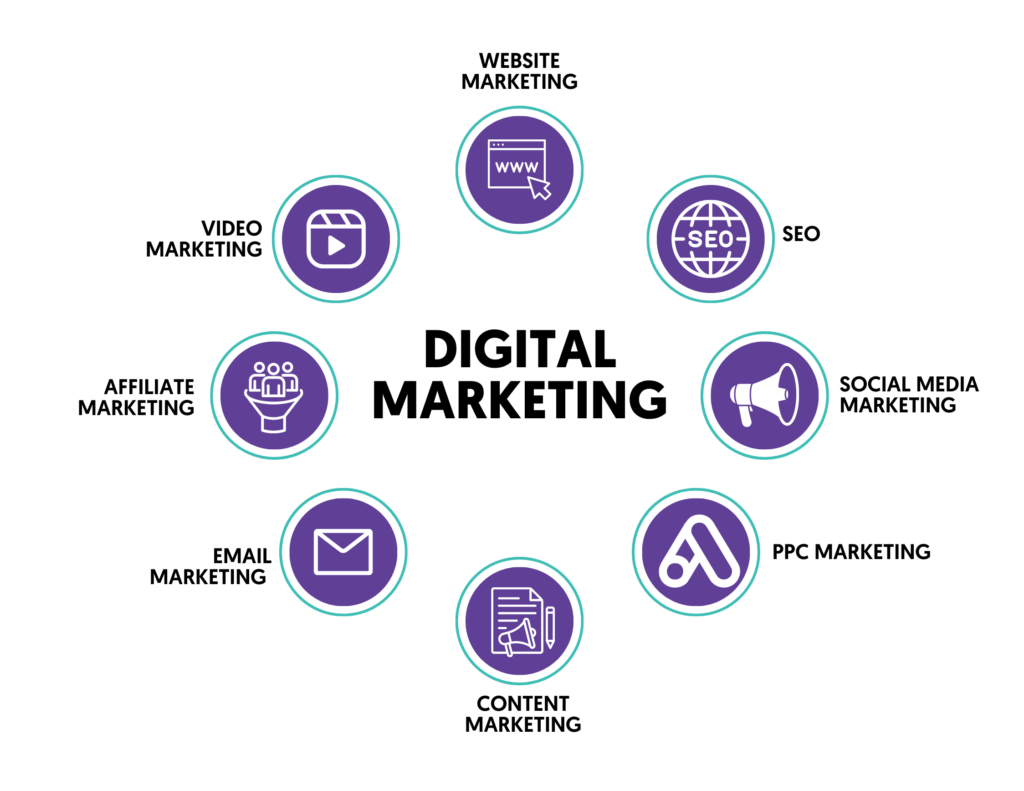
Content Marketing
Content marketing is one of the most cost-effective strategies to build brand awareness and establish authority in your niche. By creating valuable, relevant, and consistent content, such as blogs, videos, and infographics, you can attract and engage your target audience. The key is to focus on quality over quantity, ensuring that your content addresses the needs and interests of your audience.

| Point | Explanation |
| Builds Brand Awareness | Consistent content helps your brand become more recognizable, making it easier for potential customers to find and remember your business. |
| Establishes Authority | High-quality, informative content positions your business as an expert in your niche, earning trust and credibility among your audience. |
| Attracts Target Audience | Creating content that addresses the specific needs and interests of your audience ensures higher engagement and more relevant traffic to your site. |
| Improves SEO | Well-optimized content with relevant keywords enhances search engine rankings, driving organic traffic and increasing visibility without paid advertising. |
| Fosters Customer Relationships | Regularly providing valuable content helps build strong, lasting relationships with customers, encouraging loyalty and repeat business. |
Social Media Marketing
Social media platforms offer a powerful way to connect with potential customers at little to no cost. By regularly posting engaging content on platforms like Facebook, Instagram, LinkedIn, and Twitter, you can build a loyal following and drive traffic to your website. Utilizing features like stories, live videos, and user-generated content can further amplify your reach.
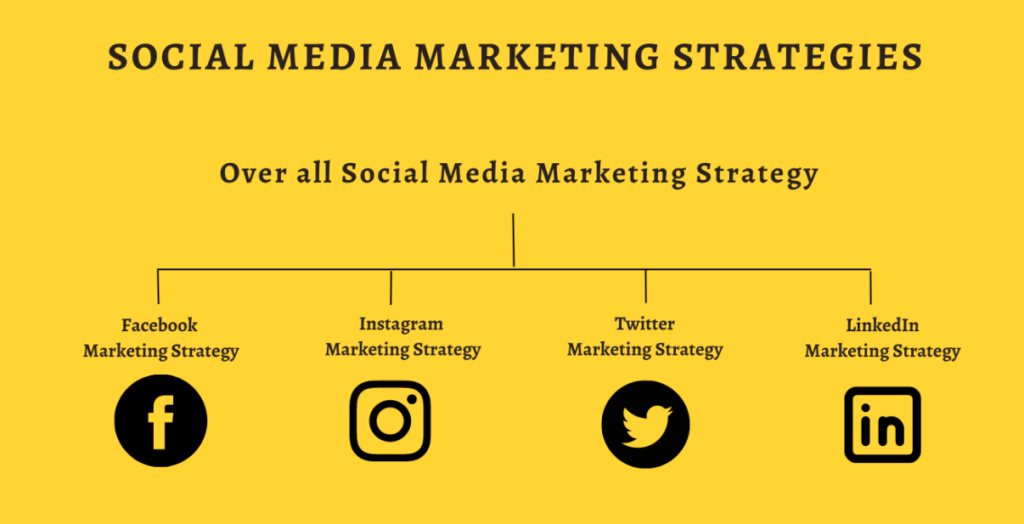
Email Marketing
Email marketing is a highly effective way to nurture leads and maintain relationships with existing customers. With tools like Mailchimp or Sendinblue, you can create and automate email campaigns that deliver personalized content to your audience. Offering value through exclusive deals, newsletters, and personalized recommendations can significantly boost your open and click-through rates.
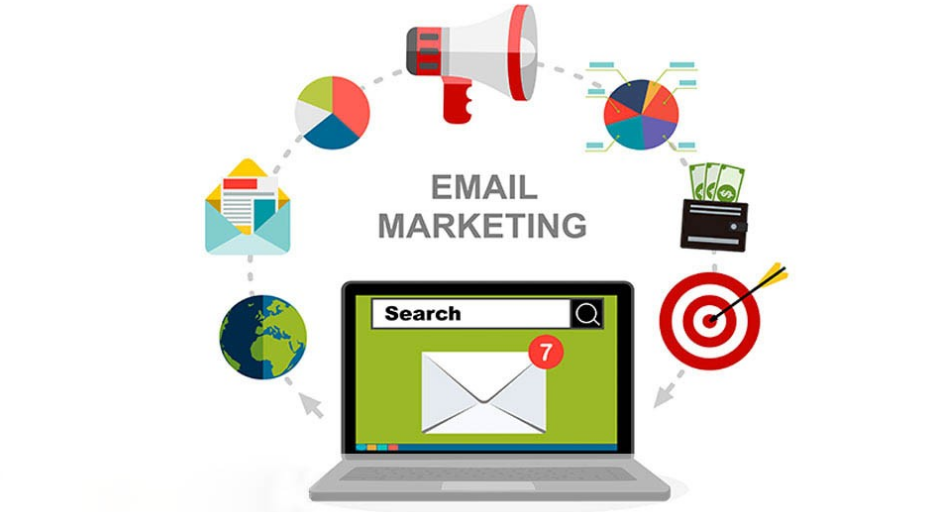
Lead Nurturing Email marketing allows you to stay connected with leads, guiding them through the sales funnel with tailored content.
Automation Tools Platforms like Mailchimp automated email campaigns, enabling you to send personalized messages at the right time, improving efficiency.
Personalized Content Crafting emails with exclusive deals and recommendations enhances relevance, making recipients more likely to engage and take action.
Boosting Engagement Well-designed email campaigns can increase open rates and click-through rates, leading to higher conversions and customer retention.
Search Engine Optimization (SEO)
Investing in SEO can yield long-term benefits by improving your website’s visibility on search engines like Google. By optimizing your website content with relevant keywords, improving site speed, and building high-quality backlinks, you can enhance your rankings and attract organic traffic. SEO may require time and patience, but it’s a low-cost strategy that can drive substantial results over time.
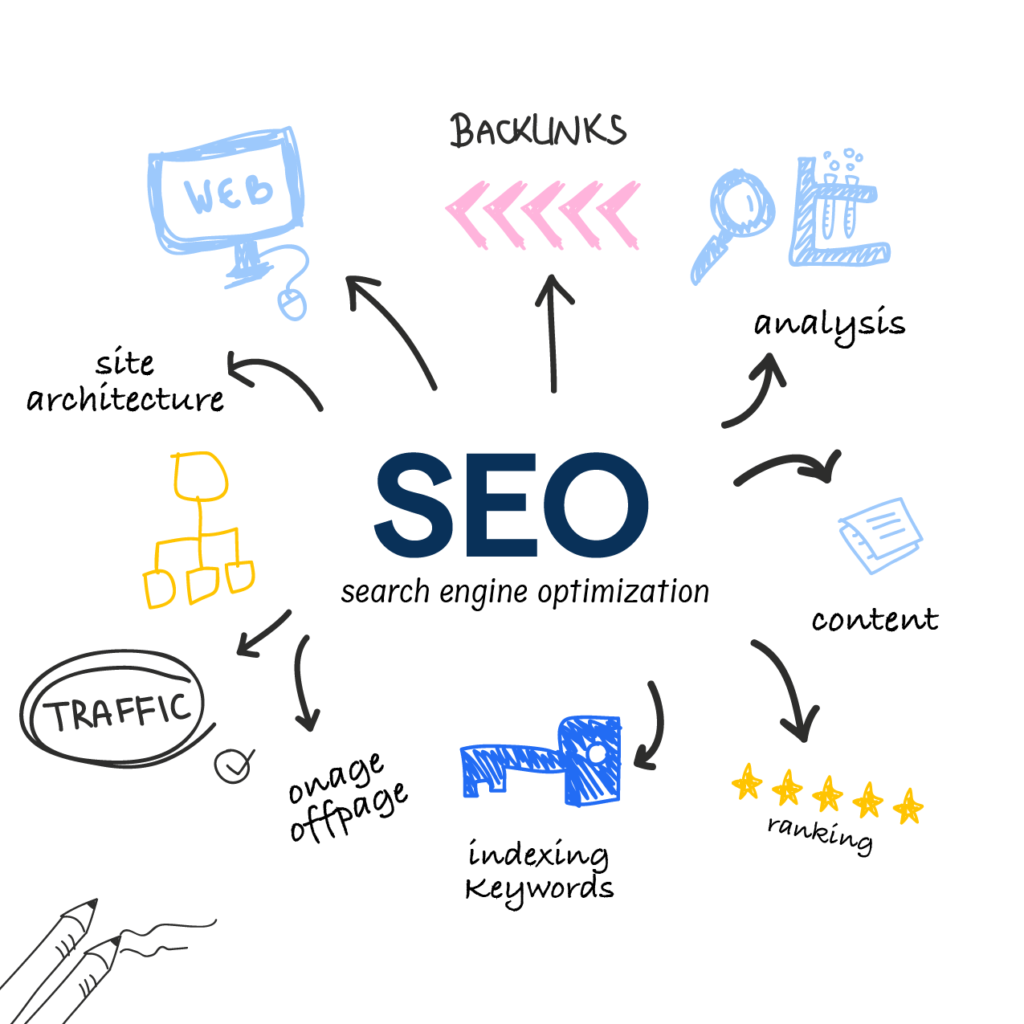
Optimizing content with relevant keywords enhances search rankings, driving more organic traffic to your website over time.
Improving site speed boosts user experience and search engine visibility, contributing to better rankings and increased traffic.
Building high-quality backlinks strengthens website authority, helping achieve higher search engine rankings and attracting more visitors.
Influencer Collaborations
Partnering with micro-influencers, who have smaller but highly engaged audiences, can be a cost-effective way to promote your brand. These influencers often charge less than celebrities or macro-influencers, making them an ideal choice for businesses on a tight budget.
By leveraging their credibility and reach, you can gain access to a new audience and build trust with potential customers.
Online Communities and Forums
Engaging in online communities and forums related to your industry can help you build relationships and establish your expertise. Platforms like Reddit, Quora, and niche-specific forums provide opportunities to answer questions, share insights, and promote your content subtly. This approach can increase your visibility and drive traffic to your website without the need for paid advertising.
Community Engagement
Engaging actively in online communities and forums related to your industry can be highly beneficial. By participating in discussions, answering questions, and sharing expertise, you build your brand’s reputation and drive traffic to your website. This approach leverages existing platforms and networks, making it a cost-effective way to connect with potential customers and enhance visibility.
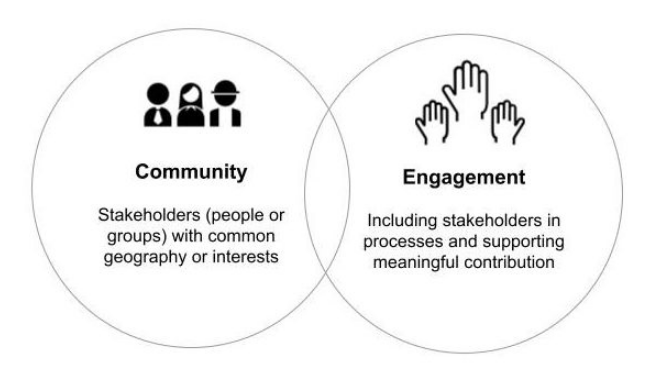
Conclusion
Low-cost digital marketing strategies can have a significant impact when executed effectively. Moreover, by focusing on content marketing, social media, email marketing, SEO, influencer collaborations, and engaging in online communities, businesses can achieve remarkable results without stretching their budgets. The key to success lies in consistency, creativity, and a deep understanding of your target audience.
Read more : Tips for Maximizing Your Digital Marketing Budget
FAQs
Content marketing is cost-effective as it helps build long-term relationships with your audience through valuable, relevant content.
Small businesses can compete by targeting niches, using SEO, and building further strong relationships through personalized content.
You can measure success by tracking key metrics such as website traffic, social media engagement, email open rates, conversion rates, and return on investment (ROI) using tools like Google Analytics and social media insights.
Yes, there are many free tools available, such as Google Analytics, Canva, Hootsuite, Mailchimp (for small lists), and SEMrush’s free version, that can help you optimize your digital marketing efforts.

Alex Mitch
Welcome to my blog! With over 10 years in digital marketing, I’ve seen its incredible impact on smaller businesses. Join me as we explore how digital marketing can grow your audience and boost your business. Whether you’re an experienced entrepreneur or just starting out, you’ll find practical tips and insights to enhance your digital marketing strategies.
Tips for Maximizing Your Digital Marketing Budget
Digital marketing remains a powerful tool for companies to generate massive revenue, tailored to align with your company’s structure, mission, and goals. However, recent years have brought about uncertain economic circumstances, leading many marketing agencies to focus on earning more while spending less. In other words, they are planning to reduce their marketing budget while keeping their revenue targets unchanged. So, the question arises: how can you maximize your digital marketing budget? This article will explain everything you need to know about tips for maximizing your digital marketing budget.
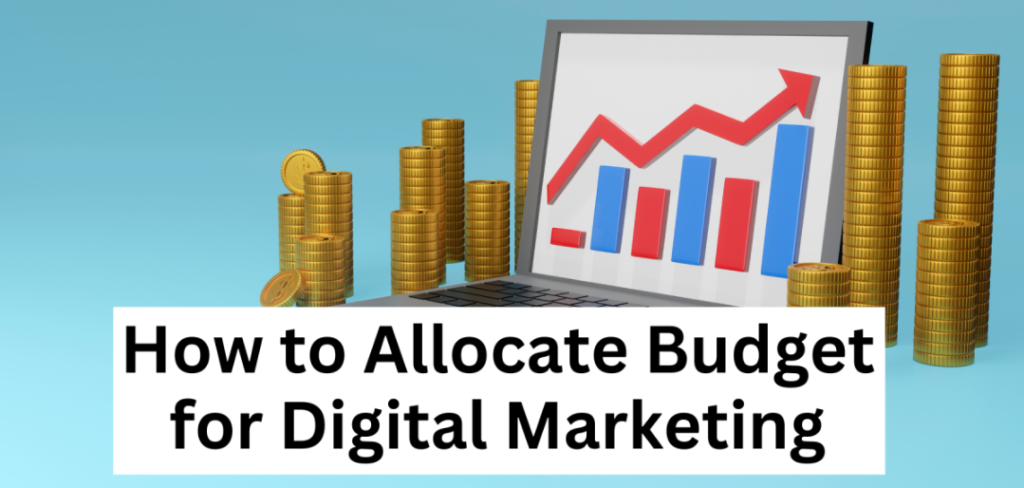
Allocating Digital Marketing Budget
Budget allocation requires you to carefully consider your expenses and compare them with revenue. Although, there is no ideal budget amount for a company to spend on its advertisement campaigns. Experts indicate that a new firm should set a minimum of $5000 for its marketing purpose.

According to the US Small business administration, a company should spend 7% of its gross revenue on marketing. You have the choice to agree with the percentage or set your own limit. However, you should look for some factors such as the industry and competition.
How To Control Your Digital Marketing Budget
Re-evaluate your business objectives when developing the marketing campaigns. In addition, make sure that your plan is in accordance with your business long-term strategy. It helps you know that your marketing strategy will share the right message to the audience.

Here are some effective tips through which you can make the most out of your marketing budget. These tips may not suit every firm but they are recommended for digital marketing agencies.
Set Clear Goals and Priorities
First, decide what you want to achieve, such as increasing brand awareness, generating leads, or boosting sales. Once you know your goals, divide your budget accordingly. Focus more on critical objectives and spend less on secondary goals.
This helps prevent overspending on less important areas and ensures your budget is used efficiently to reach your main targets.
Leverage Data-Driven Decisions
Use tools like Google Analytics to track your marketing performance. These tools provide data that helps you understand what’s working and what isn’t. Regularly review this data to make necessary adjustments.
By analyzing and refining your campaigns, you can eliminate strategies that aren’t performing well and focus on those that deliver better results.
Focus on High-ROI Channels
Identify marketing channels that give you the best return on investment, such as social media or email marketing, which typically offer high returns at lower costs. Don’t spread your budget too thin across too many channels. Instead, concentrate on the ones where your audience is most active to maximize your impact and efficiency.

| Point | Explanation |
| Analyze Audience Behavior | Study where your target audience spends the most time online. Use tools like Google Analytics to identify which channels drive the most traffic to your website, helping you focus on platforms where your audience is most active. |
| Evaluate Cost-Effectiveness | Compare the costs of different channels, such as social media ads versus email campaigns. Opt for channels that deliver high engagement or conversions at a lower cost, ensuring a better ROI. |
| Test and Measure Performance | Run small-scale tests on multiple channels to see which ones yield the best results. Track metrics like click-through rates (CTR) and conversions, and invest more in the channels that perform well. |
| Prioritize High-Engagement Platforms | Focus on platforms where your content receives the most engagement, such as likes, shares, and comments. High engagement often translates into higher ROI, as it indicates active audience interest. |
| Reallocate Budget Based on Success | Continuously monitor the performance of your chosen channels. If a channel consistently delivers a high ROI, consider reallocating more budget to it while reducing spend on underperforming channels. |
Invest in Quality Content
Creating valuable content is essential because it attracts and retains customers while driving organic traffic. High-quality content can be repurposed across different platforms, which helps you get more mileage from it without additional costs. By investing in content that resonates with your audience, you build trust and encourage engagement.
Embrace Automation Tools
Marketing automation tools help save time and reduce manual work, making your budget go further. These tools allow you to target your audience more effectively by segmenting them and delivering personalized content. This improves your campaign’s efficiency and boosts ROI by ensuring that the right message reaches the right people at the right time.
- Time-Saving and Efficiency: Automation tools streamline repetitive tasks like email scheduling, social media posting, and data analysis. This reduces manual workload, allowing your team to focus on strategic planning and creative efforts, ultimately stretching your budget further.
- Audience Segmentation: These tools help segment your audience based on behaviors, preferences, and demographics. By delivering tailored content to each segment, you can increase engagement and conversions, improving the overall effectiveness of your campaigns.
- Enhanced Personalization: Automation tools enable personalized communication, sending relevant messages to the right audience at the optimal time. This targeted approach increases the likelihood of conversion, leading to a higher ROI and more successful campaigns.
Conclusion
Maximizing your digital marketing budget requires a strategic approach, focusing on data-driven decisions, high-ROI channels, and continuous optimization. By setting clear goals, leveraging automation, and investing in quality content, you can ensure your budget is used efficiently to drive the best possible results.
Read more : Importance of Diversity and Inclusion in Marketing Campaigns
FAQs
Analyze where your target audience spends the most time and assess the ROI of different channels using analytics tools to make informed decisions.
Content marketing, social media, and email marketing are generally cost-effective strategies with high ROI, especially when combined with data-driven approaches.
It’s advisable to review your budget monthly or quarterly to ensure that it aligns with your goals and adjusts to any changes in campaign performance.
Automation helps by streamlining processes, reducing manual efforts, and enabling targeted marketing, all of which contribute to better budget management and higher ROI.

Alex Mitch
Welcome to my blog! With over 10 years in digital marketing, I’ve seen its incredible impact on smaller businesses. Join me as we explore how digital marketing can grow your audience and boost your business. Whether you’re an experienced entrepreneur or just starting out, you’ll find practical tips and insights to enhance your digital marketing strategies.
Importance of Diversity and Inclusion in Marketing Campaigns
As technology rapidly evolves, it’s reshaping the very core of marketing dynamics. Gone are the days when a few catchy phrases and flashy images were enough to captivate an audience. Today’s consumers expect more—they seek content that resonates with their personal experiences and cultural backgrounds So the diversity and inclusion in Marketing Campaigns becomes more essential. Ignoring these critical elements can lead to missed opportunities and potential losses. Marketers need to recognize that today’s audience is diverse, with rich identities and unique experiences, and campaigns that reflect this will foster deeper connections and long-term loyalty.

What is Diversity and Inclusion in Marketing
Diversity and inclusion in marketing is a strategy that involves content creation considering numerous cultures, perspectives and identities. In other words, diversity and inclusion in marketing refers to the advertising efforts that involve age, gender ethnicity and appearance.
You may wonder why it is so important for the audience? This article will explain everything you need to know about
Diversity and Inclusion
As the name suggests, diversity reflects people belonging to various groups. These are not limited to gender, race and ethnicity. While inclusion is the next step, that includes producing content which represents various experiences, requirements and preferences.

Enhanced Brand Image
Companies that actively prioritize diversity and inclusion (D&I) are often viewed as forward-thinking, socially responsible, and trustworthy. This perception is crucial in today’s market, where consumers are increasingly aligning with brands that reflect their own values and social awareness. A strong D&I approach signals to consumers that the company is committed to fairness and equality, which can lead to increased customer trust and loyalty.

A well-executed D&I strategy not only strengthens a brand’s reputation but also fosters positive public perception. When consumers see a brand genuinely embracing diversity and inclusion, they are more likely to develop a strong affinity for that brand. This positive reputation can differentiate the company in a competitive marketplace, making it a preferred choice for conscious consumers.
Improved Customer Engagement
Inclusive marketing campaigns resonate more deeply with diverse audiences because they reflect the varied experiences, cultures, and identities of the target market. This relatability enhances the emotional impact of the campaign, leading to more meaningful interactions between the brand and its customers. When customers see themselves represented, they are more likely to feel connected to the brand.
Explore Maximizing User Engagement with Interactive Ads in 2024
| Aspect | Explanation |
| 1. Enhanced Emotional Connection | Inclusive campaigns create a stronger emotional bond by representing diverse backgrounds, which makes customers feel seen and understood. This emotional connection fosters loyalty and encourages repeat interactions with the brand. |
| 2. Broader Audience Appeal | By embracing diversity, brands can appeal to a wider audience, including those who might have been overlooked in traditional marketing. This inclusivity can lead to a broader customer base and increased brand recognition across different demographic groups. |
| 3. Increased Customer Trust | When customers see that a brand values diversity and inclusion, they are more likely to trust that brand. This trust translates into higher customer satisfaction and more positive word-of-mouth, which can significantly boost customer engagement and brand reputation. |
| 4. Higher Social Media Engagement | Inclusive campaigns often generate more social media buzz, as customers share content that resonates with their personal experiences. This increased sharing and interaction on social platforms can lead to higher visibility and more organic engagement with the brand’s content. |
Support for Value-Aligned Brands:
Consumers today are increasingly selective about the brands they support, often choosing those that align with their personal values. A brand that demonstrates a commitment to diversity and inclusion is more likely to attract and retain customers who prioritize these values. This alignment fosters stronger customer loyalty and advocacy, as consumers feel that their own beliefs are being validated and supported by the brand.
Innovation and Creativity
Diverse teams bring together a wide range of perspectives, experiences, and ideas, which can significantly enhance creativity in marketing strategies. When people from different backgrounds collaborate, they can approach problems from various angles, leading to more innovative and effective solutions. This diversity of thought is a powerful driver of creativity, allowing brands to develop unique and compelling campaigns that stand out.

Compliance and Risk Mitigation
By incorporating diversity and inclusion into marketing campaigns, brands can proactively avoid potential backlash or accusations of discrimination. In today’s social media-driven world, even a single misstep can lead to significant negative publicity. A strong D&I approach helps mitigate this risk by ensuring that all marketing messages are respectful, inclusive, and free from bias.
Challenges in Implementing Diversity and Inclusion
Avoiding Tokenism
- Tokenism occurs when diversity is represented superficially or insincerely, which can lead to negative perceptions.
- It’s crucial to ensure that D&I efforts are genuine and deeply embedded in your brand’s values.

Cultural Sensitivity
- Marketers must be aware of cultural nuances and avoid stereotypes that could offend or alienate certain groups.
- Research and collaboration with diverse teams can help create culturally sensitive campaigns.
Balancing Diversity with Brand Identity
- While embracing D&I, it’s important to maintain consistency with your brand’s core identity and messaging.
- D&I should enhance, not overshadow, your brand’s unique voice and values.
Conclusion
Diversity and inclusion in marketing campaigns are not just ethical imperatives but also business necessities. By embracing D&I, brands can tap into new markets, foster customer loyalty, and build a strong, positive reputation. However, it’s essential to approach D&I with authenticity, cultural sensitivity, and a commitment to continuous improvement.
Read more : Role of Customer Data Platforms in Marketing
FAQs
Diversity allows brands to reach a wider audience, ensuring that various groups feel represented and valued, leading to increased engagement and brand loyalty.
Inclusion can be implemented by creating content that reflects diverse voices, ensuring accessibility, and avoiding stereotypes or tokenism.
Brands that overlook D&I may face reputational damage, loss of customer trust, and potential legal issues due to perceived discrimination or insensitivity.
Yes, small businesses can adopt D&I strategies by focusing on authentic representation, engaging with diverse communities, and leveraging local insights.

Alex Mitch
Welcome to my blog! With over 10 years in digital marketing , I’ve seen its incredible impact on smaller businesses. Join me as we explore how digital marketing can grow your audience and boost your business. Whether you’re an experienced entrepreneur or just starting out, you’ll find practical tips and insights to enhance your digital marketing strategies.





